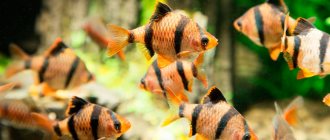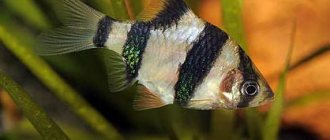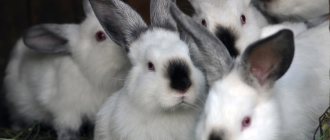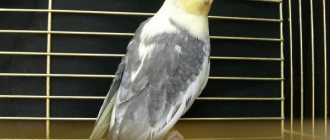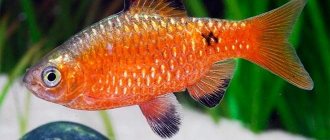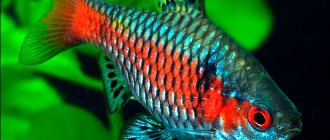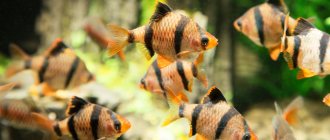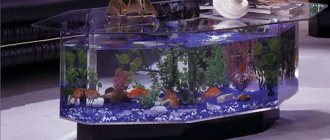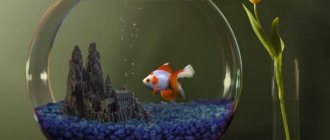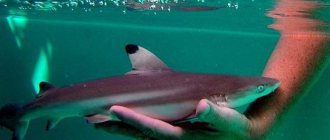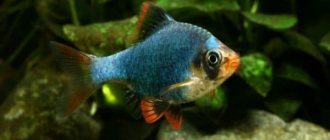Description
Cherry puntius or cherry barb is a species of fish belonging to the class of ray-finned fish and located in the cyprinidae family of carp. Belongs to the endemic (species found only in a certain area and nowhere else) of the island of Sri Lanka. Found in the waters of the Kelani and Nilwala rivers. Prefers clean reservoirs with clear and slowly flowing water. The bottom is most often covered with silt, in which a large amount of vegetation grows.
In the past, the water bodies on the island of Sri Lanka were changed by human activity, and the territories were used for their own needs. This led to the species being listed in the Red Book as being on the verge of extinction. With the help of nature reserves and captive breeding, the population has been restored.
These fish, originally from Asia, have been known to mankind for more than several hundred years. In the European part, their general popularity began in the 1930s. In the USSR they appeared closer to the 1950s.
Appearance
From the name of the species, the color of the fish immediately becomes clear - rich red-cherry. The color reaches its greatest brightness during the spawning period. And also the color changes depending on the physical condition. The color of fish living in natural conditions is much brighter than those bred in captivity. Along the sides there is a dark stripe that stretches from the head to the caudal fin.
These fish grow up to only 5 cm. Their body is elongated and oval with points in the head and tail. The dorsal, pelvic and anal fins do not differ in size or shape, and the caudal fin has the usual forked shape.
There are small mustaches near the mouth, which is why the genus was called barbels.
Breeders have developed a more perfect and beautiful form of cherry puntius - veiled cherry barb. The veiled specimen has long, flowing fins and a more striking coloration.
Behavior
Cherry puntius is a schooling fish. In the wild, flocks of puntius reach a couple of thousand individuals. When kept alone, the color of the fish turns pale and dull.
Behavior towards other representatives is peaceful and non-aggressive. Do not keep them with fish that have veil-like and long fins. The barbs bite them off.
Lifespan
The average lifespan of barbs is 4 years.
Breeding Barbus cherry
Breeding this fish is similar to breeding other types of barbs. The cherry barb reaches sexual maturity at the age of 6-8 months. Before spawning begins, the spawners are placed in different aquariums and diligently fed with live food for two weeks. The stimulus for the start of spawning, as in most cases, is the addition of fresh water and an increase in temperature to 27-28°C.
An aquarium with a volume of 20 liters or more, filled with water no more than 20 cm, is suitable as a spawning ground for an adult pair of fish. Due to the fact that breeders eat their eggs, a separator net should be placed on the bottom of the aquarium. Medium-sized gravel can be used as soil. Several bushes of narrow-leaved plants are planted in the aquarium. Cherry barbs are usually planted in the spawning tank in the evening. In the morning, the fish usually begin to spawn.
cherry barb photo
Producers are planted for spawning in the ratio: 2 males - 1 female. The female lays about 200-300 sticky small eggs. Immediately after spawning, the spawners are removed. Barbs love to eat their eggs. The water level in the spawning tank must be lowered to 10 cm. The eggs are incubated for two days. At about 3-4 days the fry begin to swim around the aquarium and feed. The fry should be fed live dust and daphnia, and after 10 days small cyclops can be given. You need to feed the fry at least three times a day, but do not overfeed. The fry grow unevenly, so it is advisable to periodically separate them from each other. Sexual differences in fry appear at the age of about 3 months, and the ratio of females to males is usually 1: 2. Life expectancy is 5-6 years.
Living conditions
It is known that the Cherry Barbus has an attractive appearance and a friendly disposition. In nature, this fish is found relatively rarely in shallow, low-flowing rivers of Ceylon and Sri Lanka, and is also listed in the Red Book. The date of the first appearance of this fish in European aquariums is considered to be 1939. The cherry barb immediately caught the hearts of aquarists for its unpretentiousness to living conditions and for its excellent external characteristics. It is thanks to its striking red-cherry color that this aquarium fish acquired its telling name. Only by 1959 the cherry barb find its way into Soviet aquariums, inevitably gaining its share of popularity here too.
cherry barb photo
Appearance and gender characteristics
The cherry barb is not large in size and can reach a length of approximately 5 cm. The arched back of the fish is colored brownish-greenish. The body of the barb, which has yellowish or red-crimson sides, is elongated, with a longitudinal dark stripe along its entire length. The fins of the fish are of completely different shades ranging from deep red to pale yellow. Two short, downward-pointing antennae surround the lower jaw of the barb's mouth. The upper part of the iris of the eyes is crossed by an expressive scarlet line. The inconspicuous coloring and slightly increased body volume distinguishes females from male barbs. The abdomen of males is rich red, while that of females is pale flint yellow. The dorsal fin of female barbs also has its own characteristics, such as a slightly red color with a pair of curved dark stripes. It is extremely important to create comfortable conditions for this fish in the aquarium, because the beauty of their appearance depends on this. More recently, unique specimens have begun to be found - albino barbs, which invariably look striking in any aquarium.
cherry barb photo
COMPATIBILITY WITH OTHER FISH
Unlike many of its relatives, the cherry barb is a very peaceful and calm fish in behavior. They don't even bother fish with veil fins. Ideal for community aquariums, but must be kept with similarly small fish. Small and defenseless, it will become easy prey for predatory fish. It is good to keep it with tetras - common neon, red neon, erythrozonus, black neon. They get along well with small fish, such as neon and rasbor, but angelfish are quite large and aggressive neighbors for the cherry barb. However, he himself will not touch them, but they can touch him. They also do not touch shrimp, even small ones like cherry shrimp.
GENDER DIFFERENCES
It is difficult to distinguish females from males in cherry barbs at a young age. But in mature fish, the differences are obvious: the female is plumper, she has a rounded abdomen, while the male is slender and more brightly colored. In addition, males have a showdown, without fights, but with a demonstration of the best flowers.
FEEDING
Feeding the cherry barb is quite simple. The main rule is to feed him a variety of foods; he is not picky about food; he eats live, frozen and artificial food. It is ideal to feed him two to three times a day, in small portions that he can eat in two to three minutes. With varied, regular feeding, the cherry barb will always be active and beautiful.
When choosing food, keep in mind that the cherry cat has a very small mouth and the food should be small. He especially loves bloodworms and tubifex, but will not refuse other live foods.
SHARK BALA CONTENTS BREEDING DESCRIPTION COMPATIBILITY FEEDING
BARBUS-CARE REPRODUCE DESCRIPTION COMPATIBILITY PHOTO VIDEO
Content
Aquarium
A 50 liter tank is enough for a flock of 5 barbs. But it is preferable to keep a flock of 10 individuals in a 100-liter container. It is better to choose an aquarium that is short and long, because punts will need enough space for swimming. At the bottom, place various caves, grottoes, stone towers, and driftwood.
Keep the water clean and replace 1/3 of the container volume weekly.
Water parameters
Barbs are not particularly demanding on the composition and quality of water. Regular tap water is suitable for them, but it needs to be left for a while.
The water temperature in the tank should be between 23 and 27 degrees Celsius. Acidity is 6.3–7.6 pH, and hardness is 6–18° dH;
Plants
A large amount of vegetation is planted in a tank with cherry puntius. In the natural reservoirs where puntius live, the plant world is always developed. But remember to leave enough space for swimming in the aquarium.
Good fit:
- Bacopa carolina.
- Aponogeton.
- Vallisneria.
- Hydrocotyla.
- Hygrophila.
- Lagarosiphon curly.
- Ambulia.
Priming
There are no preferences when choosing soil, but owners note that fish look more impressive on dark soil. Dark gravel works well. Do not choose coarse soil, give preference to fine or medium soil.
Equipment
Equip the aquarium with barbs with aeration and filtration systems; installing a pump would also be a good addition. This will ensure constant purification of the water in the container and a sufficient amount of oxygen dissolved in the water. The pump will create additional flow and circulation of water, but the flow should not be too strong.
Lighting
Any lighting is suitable, barbs are not picky about this, but a good option would be to install an aquarium near a window on the sunny side - natural light will have a beneficial effect on the fish. But daylight alone will not be enough, especially in winter, so place additional light sources on the lid of the aquarium. And also, if desired, use the backlight.
Be sure to provide shade shelters so that the inhabitants have the opportunity to hide if necessary. Plants with wide leaves, caves, driftwood, and houses are suitable for this.
Aquarium
An indoor aquarium with a volume of 20 liters or more for a couple of fish with dark soil and dim overhead lighting. The aquarium should have thickets of plants, various shelters in the form of stones, snags and free space for swimming.
in aquariums with a water temperature of 22-27˚C, which has an acidity of 6.5-7.5 pH and a hardness dH of 10-18˚. In aquariums, aeration and filtration of water must be carried out, and 20% of the total volume of water should be changed once a week.
Feeding
In the natural environment, the diet of fish consists of crustaceans, insects, larvae, and some plants. When keeping a cherry barb in a home aquarium, the fish calmly eat food of any origin. A good diet option would be a combination of live food with a small amount of dry food, such as flakes or granules. Puntius also needs supplements in the form of plant foods, for example, vegetables, nettle leaves, lettuce, spinach, and dandelion.
Puntius are fed small portions a couple of times a day. Remember that cherry barbs are small in size and have a small mouth. Therefore, choose food with small particles or grind the food before feeding yourself. When feeding vegetables or leaves, be sure to scald them with boiling water to kill bacteria and soften food pieces.
Spawning of cherry barbs
It is better to prepare the spawning of cherry barbs in the evening, counting on the morning hours. The signal for the start of spawning can be the entry of natural morning light into the spawning area. It is recommended to close the spawning tank to prevent fish from jumping out during heavy spawning.
Spawning lasts 2-3 hours. One female cherry barb lays up to 200 eggs. After spawning, we remove the protective net, and if plants were used as a substrate, they can be left and carefully removed after the fry swim. If the eggs have been successfully fertilized, the larvae will appear in 2 days, and after another 1 day the fry will swim and you need to be prepared for this moment.
Starter feed
As a starting food for cherry barb fry, it is better to use complete live food: slipper ciliates, rotifers or brine shrimp. The worst, but quite acceptable option would be to feed the fry with boiled egg yolk.
Preparing this food is very simple: hard boil a chicken egg and separate the yolk, cut it in half and rub it over the surface of the yolk with a watercolor brush dipped in water and rinse it in a jar of water. When the microparticles of the yolk settle, drain the cloudy water and add clean water. After the drained water becomes clear, carefully pour the settled yolk particles onto the compressor sprayer for the fry.
Good and useful helpers for cleaning the bottom of the aquarium from uneaten yolk particles will be ampularia snails or a small Ancistrus catfish. These orderlies must be assigned to the fry. From the first days of feeding the fry with yolk, add Daphnia moin. Small newborn crustaceans will become available for consumption already on the 3-4th day of the fry’s life, which will become noticeable by the swollen abdomen.
Later, you can alternate daphnia with grindal, as well as cut and well-washed aulophorus. Growing fry need to be placed in additional aquariums, otherwise their growth will begin to be delayed. It is necessary to move grown fry to adult fish only when the fry reach 1.5-2 cm in size and make sure that no treacherous neighbors are waiting for them in the new aquarium.
You cannot release all the fry at once. To begin with, release only 1-2 fish and, if after a day they are not pursued by adult fish, then you can release the rest. Otherwise, you need to catch and return the fish to their place for further growing or relocate the bullies.
Compatibility
Cherry barbs are famous for their peaceful temperament and get along well with almost all other aquarium inhabitants, especially if they themselves do not show aggression. It is possible to keep fry of other fish together with barbs and not have to worry about their safety. But cherry fish themselves often become victims of attacks from other fish due to their size. For example, the poor compatibility of barbs with territorial angelfish and discus fish. Sumatran barbs should not be kept together either.
A post shared by Pablo Sebastián Elarca (@elarcapetshoplujan) on Jun 5, 2021 at 1:09pm PDT
How to keep
The reservoir should be filled with plants (fine-finned) abundantly, since the cherry barb is shy and likes to hide in thickets and decorative grottoes and snags. Vegetation is also necessary when breeding fish, since grown young animals are more protected among it. In areas without plants, fine-grained soil is desirable. Externally, the aquarium looks natural and elegant, imitating a piece of a river in a tropical forest. The cherry barb has a bright color only when properly maintained. Pets are mobile, and for them you need to choose an elongated aquarium. Its width is not so important; at the same time, the maximum length is required. Fish should be kept in a school of 7 or more individuals. Having accelerated while swimming, the pet can jump out of the reservoir and die. To prevent this, you need a lid. They tighten the top of the container with gauze, but this is ugly. Modern aquariums already have a lid with built-in lighting.
Editorial: Moss string
In the foreground, you need to leave the barbs a strip of free space for active swimming. The fish are shy, so you can’t place an aquarium in the aisle. Keeping cherry barbs in a group of less than 5 individuals also causes stress. This is due to the peculiarities of the life of fish in nature, where they feel safe only in a large school. The soil in the aquarium should not be made colorful or too light. A cherry-colored barb looks most advantageous on dark, almost black soil, which emphasizes the richness of its color. The place for the aquarium should be chosen so that natural light from the window falls well on it. This improves the growth of plants that are necessary for fish. The aquarium is cleaned weekly, with thorough cleaning of the soil and changing ¼ of the volume of water. Without such care, pets begin to suffer and often die.
See how barbs behave in a community aquarium.
https://youtube.com/watch?v=WiDgjSKsSig%3F
Reproduction
Puberty occurs at six months, and individuals are ready to reproduce at 9-12 months. To reproduce cherry puntius, there must be 2 males per female. To breed barbs, you will have to create more favorable conditions in the aquarium or place several fish in a separate spawning tank. A week before spawning, the fish are fed heavily and the water temperature is increased. It is advisable to ensure a complete absence of stress. When setting up a spawning tank, you should lay a net on the bottom through which the eggs will fall, and place vegetation on top of the net.
Sex differences
During the breeding season, individuals are easy to distinguish by gender, as males become much brighter in order to attract females. The female gender is much more modestly colored. Females have a more convex and rounded abdomen, males are slimmer, and also more elongated and graceful.
Spawning
The spawning process often occurs closer to dawn. During spawning, the female lays up to 250 eggs, but not all of the fry will be viable. After spawning, the water level is lowered and the parents are removed. It is advisable to equip the spawning tank with eggs with an aerator. The eggs will hatch in a day. It is preferable to feed the fry microworms and brine shrimp. The fry grow very quickly and are highly active.
Features of spawning
Males and females are bred in different aquariums and fed live food for at least a week. By the end of the fattening period, the female becomes fatter, and the male acquires a more intense cherry color. Then the fish are placed in one reservoir. Females lay eggs on the ground and plants, while males fertilize them. After the end of spawning, adult fish are separated from fry.
The ripening time for caviar is two days. On the fourth day, the fry begin to swim, and they are given ciliates. Alternatively, you can use dry starter food, but they grow worse on it.
It will be possible to return the young animals to the general aquarium when they reach a size of at least 2 cm. Adults will not pose a danger to them.
Diseases
Resistance to most diseases is a distinctive feature of barbs. They have a strong immune system that helps them survive in adverse conditions. With improper and inappropriate care, barbs can contract various diseases.
- Lack of aeration system. There are fish that are able to breathe air at the surface, but most species require aeration.
- Lack of a filter and rare water changes in the aquarium.
- Incorrect ratio of aquarium volume to number of fish.
- Poor quality food, which is most often contaminated with infections.
- Failure to comply with hygiene rules, entry of infected plants and decorations.
- No quarantine for purchased fish.
- Incorrect organization of spawning.
The most common diseases affecting the body of cherry barbs:
- White-skinned.
- Gill rot.
- Rubella.
White-skinned
White-skinned is an infectious disease that affects the body of the fish, the color of the pet changes. Its skin becomes whitish or yellowish near the caudal fin and on the back.
The disease easily spreads throughout the aquarium from one sick fish to another, so if you notice signs of the disease, immediately begin treatment and remove healthy fish. Secondary symptoms are considered
- Lethargy of fish.
- Decreased appetite.
- The individual is on the surface of the water.
- Problems with coordination due to disruption of the nervous system.
Treatment in this situation is carried out using a solution of chloramphenicol (200 mg/liter) and complete disinfection of all objects in the aquarium and the aquarium itself.
Gill rot
Branchiomycosis or gill rot is a fungal disease that affects the gill apparatus. The causative agent of the disease is the fungus Branchiomyces. Although the disease most often develops in contaminated water, if the pathogens get into the aquarium, it will be quite difficult to stop the disease.
The fungus enters the tank through poor quality food or from other infected fish.
High temperature, food residues in the water, and fish waste can contribute to the development of the fungus. The fungus enters the gill slits and lingers there and germinates. As the fungus grows, it closes the blood vessels and parts of the fish’s body die. Within a week, the disease can kill almost all the fish in the tank.
Symptoms include
- Inactivity.
- Passivity.
- Lack of appetite.
- Gill rot is distinguished from other diseases by the presence of red-burgundy stripes on the gills, which are then supplemented by dull gray spots and dying skin.
- The representative often itches in damaged areas.
- The inhabitant of the aquarium begins to swim around the aquarium on its side.
Treatment is carried out in baths with chemicals to destroy spores and fungi or in salt baths. Carry out thorough disinfection in the aquarium.
Rubella
Aeromonosis or rubella is a disease caused by infection. It is more common in outdoor ponds and reservoirs, but can also be found in home tanks. Pathogens: aeromonas, bacteria.
Causes of rubella:
- Overpopulation of the aquarium with inhabitants.
- Leftover food is not removed from the aquarium and decomposes.
- Water pollution.
Symptoms:
- Red spots on the body of the fish during the “pre-acute” period of the disease.
- Further formation of ulcers.
- The scales rise, their color becomes faded and dull.
- The abdomen is getting too big.
- Bulging eyes, eyeballs protrude too far forward.
Care and maintenance
To keep a cherry barb you do not need a large aquarium. Considering that you need to keep fish in schools of 6 or more, 50 liters will be enough
It is very important to keep barbs in groups. Solitary confinement negatively affects both the color of the fish and its health.
In addition, only in a flock do hierarchical relationships and characteristic behavior appear, which will be interesting to observe. The fish prefers to swim in the middle and lower layers of water.
It is advisable to equip the aquarium with a lid so that the fish cannot jump out, because barbs are famous for their jumping ability.
You can choose any design for the aquarium, but cherry barbs will look most impressive with natural decorations that imitate natural bodies of water. You can put sand or small pebbles on the bottom. Be sure to install a couple of natural driftwood, which will allow you to divide the aquarium into zones and become an additional shelter
It is very important that the aquarium has islands with live plants. Shy fish can hide in them in case of danger.
Long-stemmed species are well suited: Vallisneria, Cabomba, Elodea, Cryptocoryne. It is best to plant them along the walls of the aquarium, leaving the front part for free swimming.
Cherry barbs in an aquarium with live plants
Fish do not like bright light, so it is advisable to dim it with the help of floating aquatic plants (pistia, riccia). For maximum comfort for barbs, the aquarium should be equipped with a filter and a compressor. You will also need a thermostat, because this species loves water with a temperature of at least 22°C. To prevent waste products from accumulating, it is necessary to regularly change up to 30% of the water once a week.
Reviews
Cherry barbs are considered the most calm and peaceful inhabitants of the barb genus. Breeders note that their pets are not known for being destructive or excessively whimsical and selective. These inhabitants are omnivores, so there are no problems with feeding. There are no particular problems with reproduction either. And everyone also notes the exquisite beauty of this fish, its red-cherry color.
Behavior and Compatibility
The cherry barb is a calm and peaceful fish by nature. Thanks to this, they can be kept in company with other small fish. Barbus is an unpretentious and very sociable neighbor. He lives peacefully in the company of the same small, peaceful individuals. Rasboras, neons, corydoras or zebrafish are perfect companions for barbs. But barbs cannot be kept with large or aggressive fish. For example, they can be seriously injured by angelfish.
Photo gallery
Description of the genus “BARBUS (Barbus)”
Order: Cypriniformes Suborder: Cyprinoidei Family: Cyprinidae
In the old literature, instead of the genus Barbus, you can find 3 genera, which included fish that differ in the number of antennae: without antennae - Puntius, with 1 pair of antennae - Capoeta, with 2 pairs of antennae - Barbodes.
They inhabit southern and southeastern Asia, Africa and Europe.
The body is moderate to strongly elongated in length. The mouth is terminal or lower. The tail fin is two-lobed. Females have a fuller belly.
Almost all species are gregarious, agile, jumping, and peaceful. Can be kept in a community aquarium, but not with fish that have elongated or veiled fins, because barbs can tear them off. The aquarium is elongated, closed at the top, in some places there are thickets of plants, maybe stones, snags, but there must be sufficient space for swimming. Maintain a flock of at least 6 specimens.
Water for most species: 22-26°C, dH 4-20°, pH 6.5-7.5.
Food: live, additionally vegetable, substitutes.
Breeding in a spawning aquarium with a separator net on the bottom, because... most species eat eggs. Bush of small-leaved plants. Poor aeration. Natural lighting is better, artificial lighting is about 0.25 W/l. Before landing for spawning, females and males are seated for 7-10 days and fed well. Males are fed mainly with live food, females with a large addition of vegetable food. A small group of fish with a predominance of males is placed for spawning, maybe 2 males and 1 female, or in extreme cases a couple.
Spawning of many species is stimulated by replacing part of the water with soft water and gradually raising the temperature. Water for most species: 25-28°C, dH 4-10°, KH up to 2°, pH 6.5-7. Spawning usually occurs in the morning hours. The eggs can be left in the spawning aquarium, removing the fish from it, or transferred to an incubator. The water level is reduced to 10 cm, 1/2 of the volume is replaced with fresh water with the same parameters, some aquarists shade the aquarium. The incubation period is 1-2 days, the fry swim in 2-5 days.
Starter food: live dust.
Other species of the genus:
- Cherry barb (Barbus titteya)
- Barbus pentazona
- Sumatran barb (mutant) (Barbus tetrazona var.)
- Four-line barb (Barbus Lineatus)
- Green barb (Barbus semifasciolatus)
- Black barb (Barbus nigrofasciatus)
- Sumatran barb (Barbus tetrazona)
- Scarlet barb (Barbus ticto)
- Clown Barbus (Barbus everetti)
- Barbus filamentosa
- Barbus arulius
- Scarlet barb (Barbus stoliczkae)
- Odessa barb, scarlet (Barbus spec. var. ticto, Barbus ticto “Odessa”)
- Barbus butterfly. Barbus. moth (Barbus hulstaerti)
- Two-point barb (Barbus bimaculatus)
- Barbus "Schuberti"
- Barbus lateristriga
- Striped barb (Barbus fasciatus)
- Island barbel (Barbus oligolepis)
